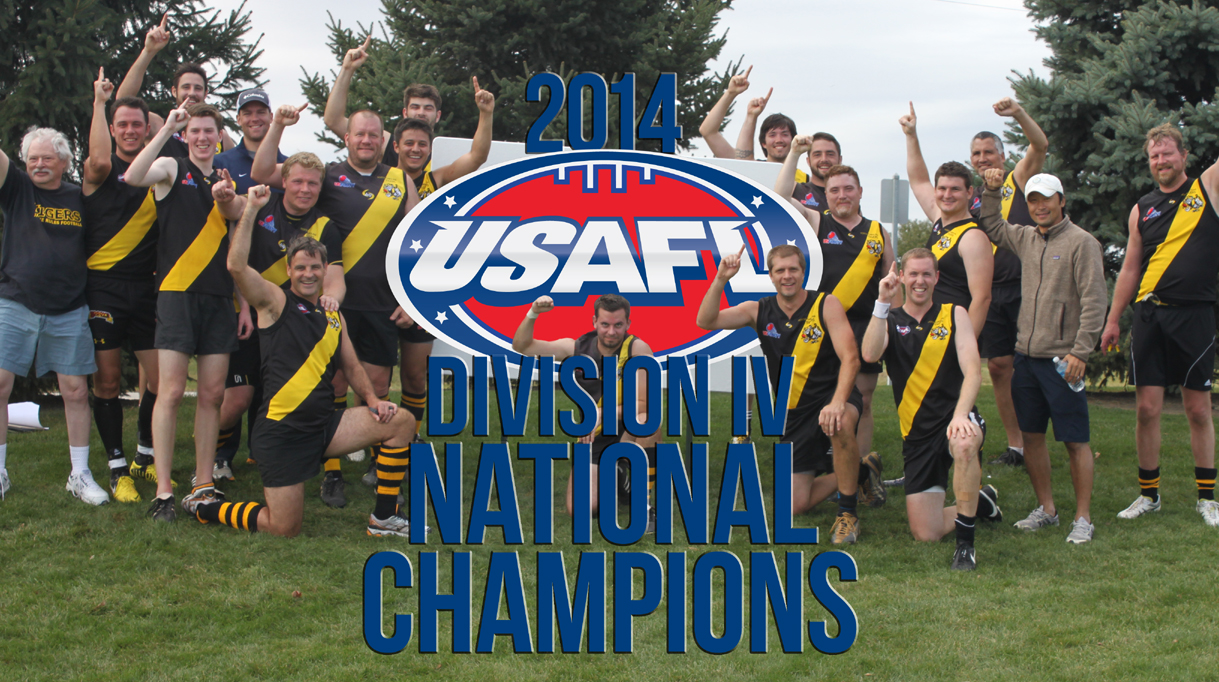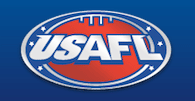|
AN AUSSIE RULES PRIMER
What is Australian Rules Football?
Australian Rules football, or ‘footy’ as it is colloquially known, is a physical
contact sport unlike any sport played in America, but which combines the
best elements of Ice Hockey, basketball and football to make for a fast
paced, exciting and highly skilled game.
THE BASICS
The Field

The Melbourne Cricket Ground
Aussie Rules is generally played on an oval field between 135 and 185 meters in
length and 110 and 155 meters in width, although the sizes of grounds do
vary. The MCG is considered to be the perfect ground. The boundary is
marked with a white line drawn a few meters from the fence and the roaring
crowd. At each end of the ground there are four posts consisting of two
shorter outer posts and two taller inner posts. The inner posts are called
the goal posts, the outer posts are the behind posts.
The Ball

The
Famous Sherrin Footy
The ball is an oval bladder covered with smooth leather, tanned for day use or
colored visible yellow for night. It is slightly larger and rounder than
the American or Canadian ball, as it was not designed to be thrown. The
T.W. Sherrin Company, of Collingwood manufactured the famous
Sherrin football until the past few years.
PLAYERS
& POSITIONS
A team consists of 18 players with four interchange players (substitutes)
allowed on the bench. Free substitutions are allowed at any time during
the match, through a “gate” in front of either bench. Players are deployed
in five lines of three across the oval, with the remaining three players
assigned to follow the ball as it moves around the ground. Each player
lines up on his opposite (for example, Fullback on Full forward). The
players in each line are usually designated as being in either the left,
center or right position in each line, relative to the direction of
attack.
The three players assigned to follow the ball as it moves around the ground are known as “followers” Their positions are referred to as:
Ruckman:
The Ruckman contests the ‘ball-up’ (Usually very tall and athletic).
Ruck-Rover:
The Ruck-rover attempts to receive the ball from the Ruckman and deliver
the ball into attack (A good combination of speed and
height).
Rover:
One of the hardest working players on the ground, the rover traditionally
scouts the packs and sets up play by clearing the ball into attack.
(Usually small, very fast and never tires)
Although the players have designated positions, they are free to move anywhere on
the ground, (no offside rule) when play is in progress. There is no “goalie” in Aussie Rules.
Click here to view the player positions & field dimensions.
SCORING
A ball kicked between the two larger goal posts without being touched is a
goal and scores 6 points. The ball is then returned to the center circle
for a “ball-up.”
If the ball passes between the goal posts by any other means or through the
behind posts then it is a behind, and it scores 1 point. If the ball hits
the goal post, a behind is scored. If the ball is forced, or carried, but
not kicked over the scoring line anywhere between the goal posts, a behind
is scored. Following a behind, the ball is kicked back into play from
within the goal-square. The opposing fullback usually delivers the kick.
The score is given in three numbers. For example: 8.9 (57). The first number
is the number of goals scored, worth 6 points each. The next number is the
number of behinds at 1 point each and the final is the sum or the total
score.
STARTING THE GAME
The game commences with each player standing in their designated position. The
main umpire (referee) bounces the ball in the center of the ground. This
can be compared to a tip-off in basketball, and the opposing ruck men leap
to gain possession of the ball. The game then progresses in a wild
free-for-all until a goal is scored and the ball returns to the center for
another bounce.
POSSESSION AND DISPOSAL OF THE BALL
Kicking
The Common Drop Punt
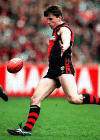
Kicking can pass the ball quickly and effectively. This is different from American
Football in that a kicking tee is never used and a kick is often taken
while the player is running at or near full speed.
Handball
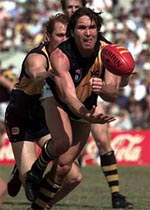
A Handball on the go!
The ball may not be thrown, but is passed by holding it stationary in one hand, while punching it with the free hand.
Tackling
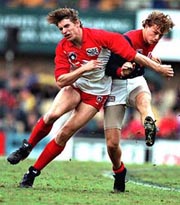 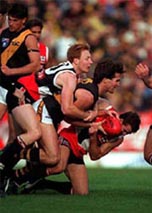
Aussie Rules is a physical game, and players can be either ‘bumped,” from the
ball using the hip and shoulder (left) or tackled by grabbing any where
above the knee or below the neck (right).
Marking

The ‘Screamer’ or ‘Speckie’
A “mark” is another name for a catch, and can be taken over the head or
against the chest. The ball cannot touch the ground, and must travel at
least ten meters in the air. A mark entitles a player to an uncontested
disposal of the ball. Marks are one of the spectacular elements of the
game, as players’ leap up on opponents backs to take ‘screamers’.
RULES
Yes,
there are some rules too! Some of the main rules are:
- You cannot push a player in the back while he has the ball.
- You cannot run more than 15 meters with the ball without bouncing it or touching it to the ground.
- You must make a reasonable attempt to dispose of the ball.
- You
cannot tackle a player not in possession of the ball.
- Finally, rough play outside of the laws of the game is severely penalized.
This has been a brief description of the game. As with all sports, the best way
to understand it is to either watch it, or even better by, getting
involved!
FOR MORE INFORMATION…
Footy on TV
Football coverage in the United States changes from year to year. In the past few
years, Fox Sports has provided highlights shows, the Match of the Week,
and live coverage of the Grand Final, on their Fox Sports World channel on
digital cable or satellite. Australian Football
Association of North America (see below) does a great job
organizing the coverage each year. You can check out at their web site for
up to date information.
Footy on the Internet
Australian Football League: The official
site of the ‘Headquarters’ of footy, the Australian Football League. It is
a great site with plenty of pictures and news about the game, scores, the
clubs and a video section with highlights of every game from every week!
United States Australian Football
League: The home of the United States Australian Football
League or USAFL. Formed in 1996, this organization has brought together
and manages the ever-increasing North American Aussie Rules competition.
These guys have a great vision for the game in the US and are worth
checking out as they maintain a list of (and links to) all the teams in
the USA and Canada.
Australian Football Association of North America: The home of the Australian Football Association of
North America and closely affiliated to the USAFL. The keepers of the
Footy FAQ (frequently asked questions) as well as up to date information
on TV broadcasting of footy coverage are located here. AFANA has recently
started marketing footies, clothing, (including jumpers) books and videos
of Australian Rules Football to members and non-members alike. If you
become a member however, you can get discounts on the offered merchandise,
and support the efforts of AFANA. These guys are largely responsible for
there being any TV coverage at all in the US, so give them a visit.
Check Fox Sports World for program availability listings in your
area!
The Age: The Age is one of the
daily Newspapers in Melbourne (Australia) and a fantastic site with
current news, great photos and a section just for the promotion of
overseas football clubs…. Worth a look if you want to see just how far
and wide Aussie Rules is being played. Click on the “Footy”
banner.
This is just a few of links to get you started; you will find many more in the
“Links” section of this web
site.
|







